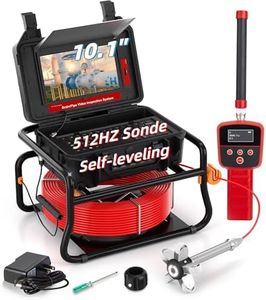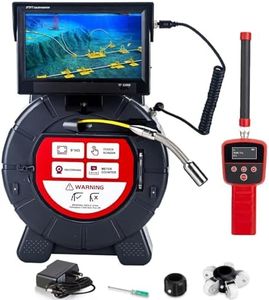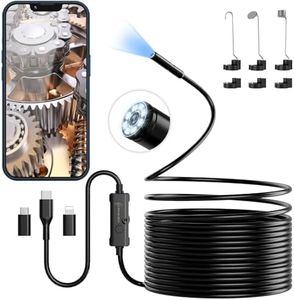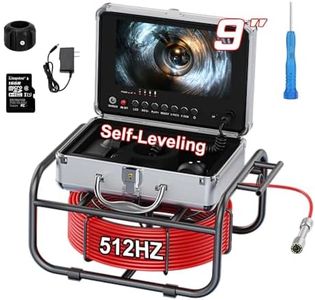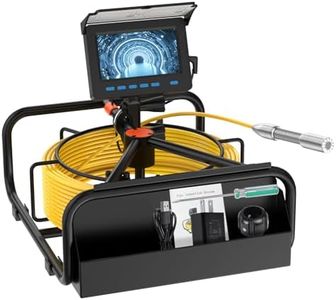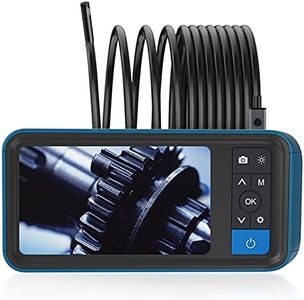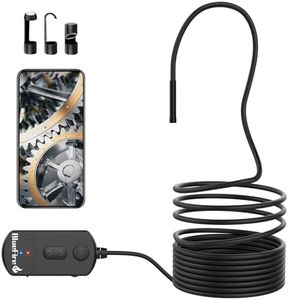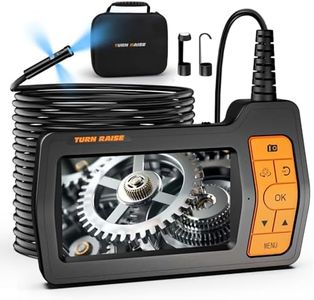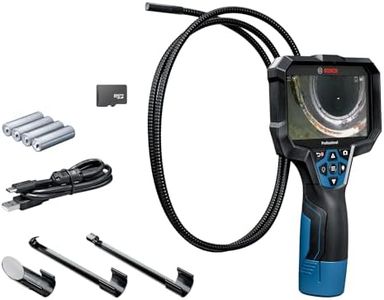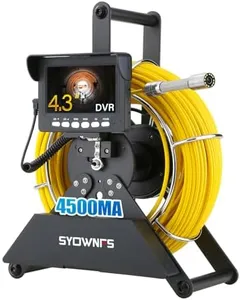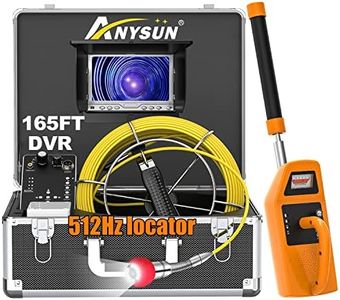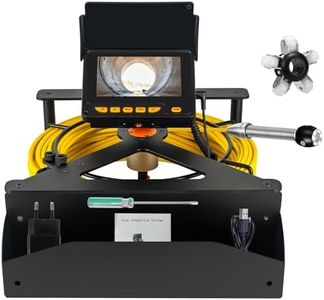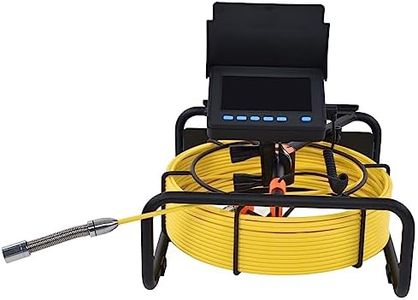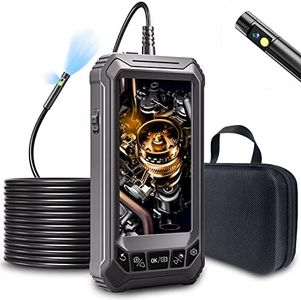We Use CookiesWe use cookies to enhance the security, performance,
functionality and for analytical and promotional activities. By continuing to browse this site you
are agreeing to our privacy policy
10 Best Sewer Cameras
From leading brands and best sellers available on the web.Buying Guide for the Best Sewer Cameras
Choosing a sewer camera can make plumbing inspections and maintenance much easier, whether you're a homeowner, DIY enthusiast, or professional plumber. The right sewer camera helps you locate blockages, check pipe conditions, and avoid digging up areas unnecessarily. To pick the best sewer camera for your needs, you should understand the main features that affect performance, usability, and suitability for different tasks. Focusing on your intended use – like the types of pipes you'll inspect, the environments you'll work in, and how you'll review the footage – will help guide your choice. Here's how to navigate the key specs that matter most when selecting a sewer camera.Cable LengthCable length refers to how far the camera can be fed into a pipe. This is important because it determines the maximum reach you have for inspecting pipes. If you need to check only short household drains, a shorter cable may suffice, while professionals working on main sewer lines or long pipes will require more length. Common cable lengths vary from about 10 meters (33 feet) for small jobs to over 30 meters (100 feet) or even more for larger inspections. Think about the longest distance you might need to inspect and choose a cable length that covers that, with a little extra for flexibility.
Camera Head SizeCamera head size is the diameter of the small camera at the end of the cable. This spec is important because it must fit inside the pipes you plan to inspect. Smaller camera heads can navigate narrower pipes but may have fewer features or lower image quality, while larger heads might not fit into tight spaces but deliver better images and additional features like self-leveling. If you're working with household plumbing, look for a smaller camera head; for larger commercial pipes, you can opt for bigger heads.
Image Quality (Resolution)Image quality or resolution is how clear the captured video or images will be. Higher resolution makes it easier to spot small cracks, blockages, or other issues inside pipes. Resolution is often listed in TV lines or as standard (SD) or high definition (HD). For basic inspections, standard resolution may be enough, but if you need to document problems clearly or spot fine details, a higher resolution camera pays off. Think about whether you need to detect tiny issues or just locate major blockages, and pick accordingly.
Lighting (LEDs)Lighting is provided by built-in LEDs around the camera lens, essential for illuminating dark pipes. More LEDs or adjustable brightness levels can help you see better, especially in larger or dirtier pipes. Too few or dim LEDs might make inspections difficult, while too much brightness can cause glare in small pipes. If you expect to work in very dark or wide spaces, choose a model with more powerful or adjustable lighting to get a clear view.
Monitor Type and SizeThe monitor is what you use to view the camera's feed in real time. Sizes range from small handheld screens to larger, standalone monitors. A bigger screen makes it easier to see details, especially if more than one person needs to view, but can be bulkier to carry. Some monitors are waterproof or detachable, increasing convenience. Decide whether you'll mostly work alone or need to show others, and how portable you want your setup to be.
Recording CapabilityRecording capability means the camera can save video or photos, usually to an SD card or USB. This is helpful for reviewing footage later or sharing findings with a client or repair crew. If you only need to see the problem in real time, you might not need this; but if you intend to create reports, keep records, or provide proof of inspection, a recording function is valuable. Think about how you plan to use the footage after inspections.
Waterproofing and DurabilitySewer cameras face wet, dirty, and sometimes corrosive conditions, so waterproofing and build quality are crucial. Look for models rated for full water submersion and robust protection against bumps or drops. Higher durability is important if you plan frequent use or inspections in rough environments, while occasional or gentle use might not require the most rugged build. Assess how tough your inspection conditions will be to pick a suitable level of protection.
